Not sure about hummingbirds - as we don't have them here I never photographed them - but photographing birds and insects are generally two very different things. For bird photography some kind of setup is generally used to get the best images as birds are more aware about human presence. They are also much more aware about the camera "eye" and directing a long lens against them is often perceived as a threat. Better to place the food, arrange a pretty perch, hide yourself and wait.
Now we all are different and so are the techniques we will need to use, but for insects less planning is usually needed as they can be more easily approached as long as you don't cast your shadow on them. Not casting a shadow is usually very important!!! Also try using a slow approach. Move a little. Stop. Move again. Some feel that wearing dark clothes can be beneficial as well, although I haven't any strong personal opinion about this.
Now butterflies are more skittish than most insects, but approach is still possible, especially if they are busy feeding:
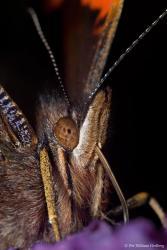
But of course a telephoto lens has its merits as well:

If they are busy doing other thing, well there is an opportunity to shoot

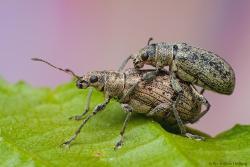
When the magnification is hight it's usally best to gently grab the perch with your left hand (if you are right handed) to stabilize the image and to be able to focus more easily.
A bit of wind helps as the critter wont be able to differentiate between the wind and the movement your hand causes. John Kimbler (Dalantech) wrote a tuturial about this technique a few years back that some might find useful:
http://dalantech.deviantart.co...
I picked these mating weevils up and carried them around until I found a suitable background to photograph against. In this case a Rhododendron flower. The difference in color in the above and bellow image comes from how far the background is away from the flash.

Also remember that if there is a sudden temperature drop many insect get a bit more slow and more easy to photograph. A bit of surprise rain is extra useful.
A hoverfly that was very relaxed on a cloudy day. Perched on an allium. Flash was used. If I remember correctly the movement of the front legs was a part of cleaning the compound eyes:
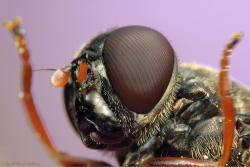
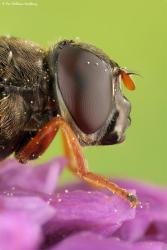
However the best time to do this is if you can find them early in the morning as they await the morning sun to warm them up and they will then have a very hard time moving. In this case tripod is mandatory as the shutter speeds will be very slow. One important thing to realize is that if you live in a forested area (as I do) many insect will find shelter high up in trees instead of on the ground. So they can't easily be found. In open grassland you will have much more success.
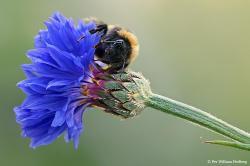
The most difficult part is trying to photograph rapidly moving insects at high magnification and in this case I strongly recommend flash and to spray and pray...










